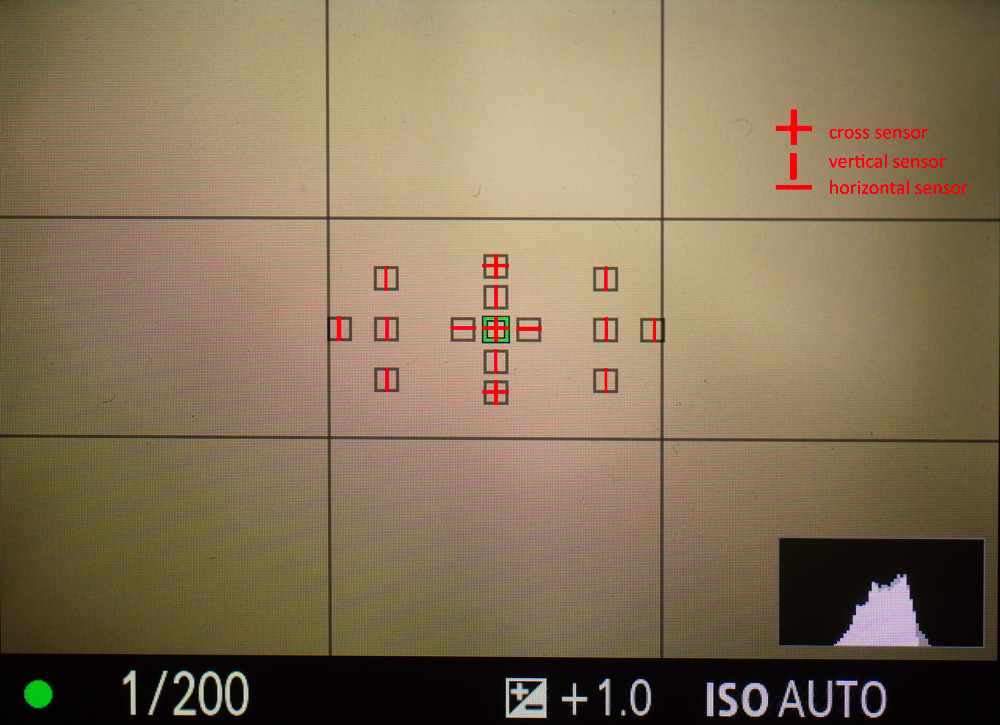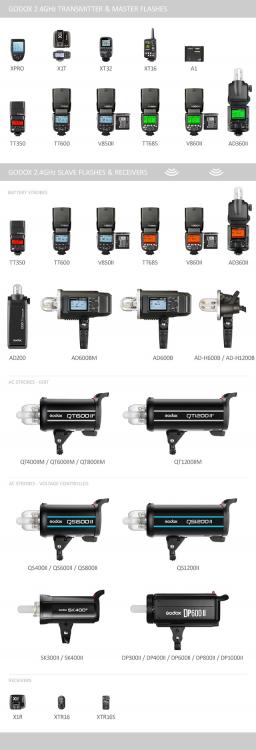-
Posts
778 -
Joined
-
Last visited
Content Type
Profiles
Forums
Articles
Posts posted by Robert Collins
-
-
3 hours ago, jonpais said:
Some commentors are asking which lenses Max used. According to DxOmark, the Fuji 56mm f/1.2 R has a T stop of 2.1, so I suppose that’s relevant. Waiting to hear back from Max. But fairly certain that’s not the lens he used.
Its pretty well known that Fuji does a 2/3 stop fudge of its iso to make it look better as illustrated by his exposures.
I am a little skeptical though of his claim of a 2 stop difference based on essentially 'Sony' sensors with a one stop difference.
-
13 minutes ago, Matthew Hartman said:
17+? Can I see a chart on this please? My guess is there is very miniscule perceptual difference between 2 stops on either side of the spectrum. Can the human eye even discern 17+ stops? I'm not being adversarial, I'm actually asking you.
The human eye can see at least 20 stops of dynamic range which is why we can easily say view a sunset without the sun blowing out and see more detail in the shadows than a camera can produce.
There are different ways of measuring dynamic range - it is not an exact science. So for instance, Sony can claim 15 stops of DR for its A73 and that might well be right by the way they measure it. DXOmark will almost certainly score it at around 14 stops using their method. By Bill Claff's measurements it is 11.6 stops (slightly below the A7R3 at 11.76)
http://www.photonstophotos.net/Charts/PDR.htm
The Red cameras do score 'extraordinary' high DR results.
https://www.dxomark.com/red-helium-8k-dxomark-sensor-score-108-a-new-all-time-high-score2/
They claim 16.5+ stops of DR but DXOmark measures it 15.2 stops (similar to say Sony claiming 15 stops and DXO measuring at 14).
What makes this 'extraordinary' is that the RED cameras are not even FF but are outperforming the best FF cameras (which makes no sense.)
Clearly Red hasnt magically improved QE of sensors relative to say Sony. DXOmark says they are using 'temporal noise reduction' which is a fancy way of saying they are combining multiple images and processing them for better image quality.
As an example you could take your camera and do bracketing -2,0,+2 and combine them in post which would increase the amount of dynamic range you could capture. What Red is effectively doing is equivalent to this but doing the post processing in camera.
-
5 hours ago, Simon Young said:
Remember I said I got a copy without the blinking pixel row when I swapped the first one? Well guess what, the replacement has them as well. Sometimes they pop up, sometimes they don’t. It’s fucking abysmal. And another thing I noticed is the motion cadence is a lot worse than on the A7rIII - a lot worse. It almost seems like the processor can’t handle the downsampling of the 6k image and it just gets horrible. As soon as you do a pan this weird almost shimmering effect turns up. Add to that the stuttering from the lacking computational power of the thing and the image gets shitty, no matter how good the low light performance is.
I am interested in this perhaps you could post a video and show us what you mean.
One thing I have noticed with the 'A7riii' is that video is quite a bit smoother when you use a lens with OIS than one without.
It is evident here courtesy of 2 videos from 'Cameralabs'
First video is with the 85 1.4 GM (no OIS)
Second, is with the 24-105 f4 (with OIS)
Yes, I know what you are thinking. One is a wide angle, one is telephoto. But I have tried video with both the 85 1.4 (no OIS) and Batis 85 1.8 (with OIS) and the Batis is noticeably better.
I also dont think this a 'problem' of the ibis but more a 'feature'. I think the 'ibis' with the non ois lens is trying to keep the image 'steady' or 'fixed' which would be perfect for stills but makes it jerky for video. At some point manufacturers will need different ibis for stills and video (doesnt the Fuji X-H1 already have this?)
7 hours ago, eoslover said:I have not had a6300, A7s2. Did Sony actually came up with a solution or remapping once's the fix?
The way Sony cameras are designed they automatically fix/fudge this issue over time. Once a month the camera does pixel remapping which interpolates dead pixels (ever notice a 'thud' from an A7 camera a second or so after you switch it off?) That is why the date fix works - moving forward the date by at least a month tells the camera it is time for pixel remapping.
BTW, every CMOS sensor has dead or hot pixels - so anyone claiming that my x camera never had a dead pixel is simply stating that they havent seen one rather than they exist and have been remapped. I thought that Sony QC limited dead pixels to 1:10,000 or .01%. Doesnt sound too bad but it does equate to 2,400 pixels on a 24mp camera. So I find it difficult to get excited about 40 dead pixels.
-
5 minutes ago, jonpais said:
And has that been found to be just a temporary fix or long lasting? Because it looks like a lot more than just one pixel. It's a small regular row, not a small speck.
Well inherently pixel interpolation is a 'fudge' more than a 'fix' but camera companies are pretty good at it.....
I would also imagine that if there were a significant number of bad pixels, you could have the camera/sensor replaced under warranty.
-
Just now, Attila Bakos said:
Oh I didn't know you have to do this procedure for a pixel remapping. On my X-T2 there was a menu called pixel mapping, so it was kinda obvious.
Yes, the same with the Olympus EM1 I had - there was a 'menu item' for 'pixel remapping'. Sony obviously thought they already had enough menu items, so they would make it even more complicated....
-
4 minutes ago, Attila Bakos said:
That was fast. If that's a true fix, that's one of the weirdest I've ever seen.
Actually this is a pretty old fix for dead/faulty pixels on a Sony sensor. Basically any sensor will have a number of bad/dead pixels. I believe that QC limits the number to 1:10,000 (or something like that.) What the camera does when it sees a dead pixel is interpolate it.
What happens if you set the date well ahead of the actual date is that the camera searches for dead pixels and then remaps the sensor for any new dead pixels by interpolating any dead pixels it finds.
-
23 minutes ago, zerocool22 said:
Yeah it is smart marketing from Canon. They have a lot of products. I dont expect otherwise.
I dont really get the 'smart marketing' from Canon. It more strikes me as a company that is dependent on 'brand loyalty' for sales not realizing that brand loyalty is a two way street.
From a marketing perspective Canon just seems to be a company with a 'lot of potential' that 'simply isnt making an effort'. That maybe not true but it is the impression Canon gives. At the opposite end of the scale, Sony's marketing 'perspective' seems to be around 'trying ' to give as much 'value' for as 'low a price' as possible.
- Rinad Amir and jonpais
-
 2
2
-
On 3/19/2018 at 1:52 PM, Django said:
Yes of course Metabones & Kipon make 0.71x speedboosters for Fuji X mount giving you FF in 4K. Kipon even just released a smart adapter for Canon EF:
https://www.fujirumors.com/kipon-announces-3-canon-ef-fujifilm-fx-gfx-autofocus-adapters/
I still struggle with the concept of large (and quite expensive) cameras with small sensors then offering fairly expensive adapters (speedboosters) to emulate FF. Why not simply buy a FF camera in the first place. If a smaller sensor camera doesnt offer an advantage in terms of 'size' (actually being smaller) or 'price' what exactly is the point?
Admittedly it does make some sense for Panasonic in video as they offer 10bit, high bit rates and 4k 60p which the FF companies havent really shown is possible in FF but I do think it is only a matter of time. The industry, I think, is trending to FF.
-
9 hours ago, webrunner5 said:
Which one for video is not so good?? Ahh, I guess you are saying the Sigma is not so hot. That sucks, it is half the price! But isn't neither one of them so hot for video, yeah I can see both good for Photos.
Speaking of that, has anyone used the Sony Alpha Adapters on a say A7s with much success using Alpha lenses? There is some damn good, cheap Alpha lenses on Amazon that would be sweet if they worked worth a damn. Most are Zeiss to boot.
Yes I bought a Sony A mount 135 f1.8 and the Laea 4 adapter (the one with the translucent focus mirror.)
There are 2 problems...
1) Because you have a mirror you have to make micro af adjustments for the lens rather like with a DSLR. I found this an incredible pain (never having owned a DSLR) and simply could not get my photos critically sharp - was it the lens? was it the af adjustment? So I didnt use it much and then sold it.
2) The af points are clustered in the center of the frame...

...its usable of course but is well short of an A7x experience. In fact the whole af experience feels 5 years old.
-
8 minutes ago, Django said:
it's not just the lack of mirror.. sony e-mount has such short flange, it easily exposes the sensor to exterior elements.
our A7iii hasn't been in for a week and it's already been sent for sensor cleaning lol..
No I 100% agree.
At the point that noone can think of a sensible reason to have a mirror in front of a sensor, they will simply state the unassailable fact that a mirror in front of a sensor is incredibly useful because it will prevent 'dust'.
-
7 minutes ago, jonpais said:
No proof it’s any better than mirrorless when it comes to dust.
I am 100% confident that putting 'something' in front of a sensor to prevent dust is better than not having 'anything' in front of a sensor to prevent dust.
I do however agree, that if you consider the major advantage of having a 'mirror' is that it prevents 'dust' you are really stretching the argument for having a mirror in the first place...
-
3 hours ago, Django said:
Plenty of reasons to pick a 5D4 over a A73 : native Canon lens support, superior colors/ skintones , 30MP sensor, DCI 4K, 422 intra high bitrate codec, dual pixel autofocus, better weather sealing, built-in timelapse , excellent ergonomics, touchscreen menus & gestures etc..
Highly doubt Canon sales/prices will be affected much by this. The 5D3 hardly saw a price drop when the A7 could be bought for $900. They address different markets.
To be honest i don't understand the hype over this camera.. we have one at the office (boss is a sony fan) and i can hardly notice any IQ difference with the previous A7R/S II series.
A lot of the same issues though (and some new ones too!). I guess the pricing is what makes it so tempting, flagship Sonys costing almost double.
edit: i can confirm we have the bottom pixel blinking issue on our unit!

Yes, I agree.
And very few people mention that the 5D4 also has a mirror which protects you from dust when you change lenses...
-
2 hours ago, webrunner5 said:
Interesting Vlogger. Interesting other website this guy has. He is comparing the Sony A7 mk III Price wise to other cameras, even other A7xx ones..
Sensible stuff I guess. But, personally, I dont think a lot will change.
Yes the Sony bodies (especially the A7iii) look great value when compared to their nearest competitors. But you still get bitten by the lenses one way or another - either expensive native lenses or adapters/reduced performance.
I suspect the 6Dii and 5D mkiv prices will come down but that is because noone will buy them if they dont rather than they will switch to Sony.
-
BTW Cinemascore scored this a 'C' (based on audience reaction on the opening weekend) which is pretty terrible (the worst of all the recent cinema releases.) So it appears to be a dud and that Paramount was 'right' to bin it off to Netflix for its international release.
-
7 hours ago, Damphousse said:
Also there were no heroes in the movie. Just a bunch of sad people running around. The soldier was the only sympathetic person. There were other sympathetic characters but of the big main characters he was the only one. He got f-cked over and then he committed suicide. I thought the woman was a piece of shit so I couldn't really get emotionally invested in whatever was going on with her. And the end was even weirder than the entire movie. Were we supposed to be happy she was going to spend the rest of her life f-cking ET? I mean I was happy the world wasn't going to get destroyed... presumably. Unless the alien was just doing the Trojan horse thing. It was weird. I didn't care about the main relationship that the whole movie revolved around. I felt bad for the soldier but that was about it.
I actually liked the casting in the movie. I generally dont like women actors in action movies but it really worked here for me.
And I think you misunderstood the ending. SPOILER ALERT. We can be pretty sure that Kane (Cain, first son of Adam and Eve) is not the real Kane (in fact we see it in the movie). We can also be pretty sure that at the end of the movie, Lena is not the real Lena but her doppelganger. We can see that in the 'inverted' view of her seen in the glass of water at the end. And rather more obviously in her 'glowing eyes' at the end.
-
I took a look at 'Bright' (which I had never heard of) mostly because of this thread.
In the UK we have an expression - a marmite film - meaning that you are going to either really 'love' it or 'hate' it and I do like watching marmite films. But Bright, I stopped watching after 20 minutes. It almost certainly isnt the worst film of the year but it was pretty terrible.
According to Cinemascore the worst film of 2017 was 'Mother'. It received an 'F' - the lowest score you can get and the first film to receive an 'F' since 2012. Mother is definitely a marmite film - I loved it.
-
11 minutes ago, jonpais said:
@Robert Collins I will agree in so far as getting a fully-featured full frame mirrorless camera for $2,000 seemed unthinkable just a few months ago. Reasonably priced, full featured crop sensor cameras that shoot 4K have been with us for a while now. As far as sheer functionality goes, reliability and usability should be taken for granted. And exactly how have Fuji been pushing the boundaries for features? I think they’ve missed lots of opportunities here myself. Zebras anyone? A functioning remote app? A headphone jack? A larger battery? Sorry, I’m not buting it.
I understand the point you are making but I still think it amounts to a 'glass half empty' argument rather than a 'glass half full'. On the other side, what Fuji has done (that would be important to me' is 1. introduce ibis (which has always been a dealbreaker for me with Fuji) and 2. higher bitrate video than its competitors (generally speaking).
I think that when both Sony and Fuji are bringing so much to the party we should probably celebrate this rather than focus on the weaknesses. We are not talking Canon, Nikon and Olympus here because their relative deficiencies are rather more obvious.
-
Still, honestly speaking, I think this whole Sony/Fuji feud is pretty silly. Reading this thread you would think that both companies had just introduced virtually unusable cameras when, in fact, both companies are pushing the boundaries of features for a hybrid and especially the features at the given price point. 6 months ago, few would have imagined we would get these hybrids at this price point.
-
40 minutes ago, JurijTurnsek said:
Ex-Machina was a shitpile of a film. All of humanities fate depending on code written by a single "genius" - that's not how software is developed, sorry guys.
I bet you are fun at parties. Are we seriously suppose to judge science fiction films based on whether they are realistic or not?
In 'Annihilation' Elena says about the concept that the 'shimmer' is refracting all elements and not just light - that it is 'literally impossible' - is she actually complaining about the script?
-
I liked the movie a lot. A story line with many themes going through it. It was beautifully shot in parts but I did feel that certain moments jarred during the film. It was a fairly ambitious movie though - I think it will age well...
-
Yes it does look very much like Panasonic's CDAF based video focusing. I have never experienced the same with my A7r3 - sure it misses focus but it doesnt shimmer. Incidentally, were you recording proxies with the 4K?
-
18 minutes ago, Trek of Joy said:
This is true, but most of the announcements are fast primes. Moving from most m43 lenses to something like the SigArt 1.4's is a significant jump in size/weight. And they still won't be cheap. But for now the E-mount has a lot of momentum with the recent announcements from various 3rd party companies.
Yes, that is true. But part of the attraction of FF is that you dont have to use 'really fast lenses' to get good low light performance or limited DOF. Lenses such as the Sony FE 28 f2, 50 1.8, 85 1.8, the Rockinon 35 2.8 or 14 2.8 are not particular large or expensive (US$200-US$700 ea). The same could just about be said of the F4 zooms.
-
4 hours ago, Django said:
So in the end i'd say it is MILC bodies that still have some work to do if they are to seriously compete with DSLRs/Cine cams. I wanna see more rugged bodies with hybrid EVF/OVFs, and better flash support for stills and 10-bit, Raw, Dual-pixel level AF, electronic ND's for video. It'll take a couple more years/body generations for that though i suspect..
I dont really see flash support as much of an issue for MILCs. Godox has the largest range of flashes of any manufacturer with power from 35w speedlights all the way up to 1200w. Cordless/li-on battery speedlights even batteries cross compatible with their LEDs. They offer TTL/HSS across the board for M43, Fuji and Sony as well as Nikon and Canon. Their prices are pretty friendly too.
-
Anyone seen this film yet as it is out? Reviews are mixed from 'masterpiece' to 'pretentious crap dressed up as...' - probably the sign it is a good film.
Anyways looking forward to seeing it when I can.






NX1 RAW VIDEO???
In: Cameras
Posted
Well apart from his ASAP is April 1st?